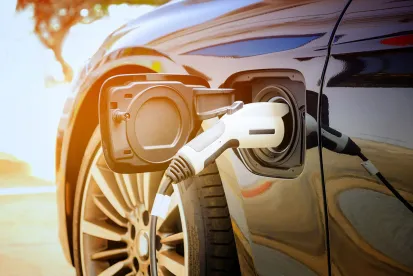Never has there been such global consensus on the requirement to reduce greenhouse gas (GHG) emissions. There is rarely a single day without media reports of the current climate consequences being experienced due to global warming. To eliminate the UK’s contribution to global warming, the UK has set an extremely ambitious target of achieving net zero by 2050.
In 2019, transport was the largest contributor to UK domestic GHG emissions (27%). In November 2020, the UK government announced a further acceleration of its timetable to phase out internal combustion engine (ICE) vehicles, with the sale of new petrol and diesel cars and vans now scheduled to end by 2030 and all new cars and vans to be fully zero emission at the tailpipe by 2035.
The government has also launched consultations on the phase-out of new ICE heavy goods vehicles and ending the sale of new ICE buses in England. There are 40,000 buses in UK (and almost 900,000 buses in Europe), so there is much work to do given that only 2% of England’s bus fleet is fully zero-emission as of 2021.
Some passenger operators have set even more ambitious targets. For example, FirstGroup has announced a pledge not to purchase any new ICE buses after December 2022, together with a commitment to operating a zero-emission bus fleet by 2035.
One of the key planks in the government’s 10-point plan for the “Green Industrial Revolution” is the inclusion of electric vehicles (EVs). An EV runs, partially or wholly, on electricity, whether stored on board the vehicle in batteries or produced from hydrogen. The battery constitutes approximately 40-50% of the value of a battery EV, with other components in the electric powertrain responsible for another 20%. It is estimated that by 2040 the battery market within the UK alone will be in the region of £9 billion per year.
It is a common theme with all EVs that there is a mismatch between the operational life of the battery and the operational life of the vehicle itself (the “Husk”). Most commercial EV batteries currently have an expected operational life of around five to eight years, while the operational life of a Husk (properly operated and maintained) will be significantly longer. For example, a diesel passenger bus is currently expected to have an operational life in the region of 16 years, with an equivalent EV Husk possibly extending this slightly.
The operational life mismatch of the EV’s component parts presents a financing challenge to both EV operators and financiers. The funding arrangements at the outset of any procurement need to cater for the significant deferred costs in respect of replacement batteries whilst also mitigating any unpredictable risks and costs. For these reasons, one attractive option may be to have separate financing solutions for the Husks and the batteries.
Commercial EV operators have encountered some resistance in financing passenger bus Husks over terms in excess of eight years, as diesel buses have historically generally been limited to a maximum finance term of eight years even though their operational life is often far in excess of this. There are, however, now a number of financiers becoming comfortable with financing passenger bus Husks over longer terms. The financing of Husks can therefore utilise traditional financing structures that are familiar to all parties, albeit with some additional considerations regarding remarketing and access to batteries.
It’s All About the BaaS – Financing of Commercial EVs
The financing of the batteries for commercial EVs is proving more complex, and there are a number of emerging models. One such financing model is the provision of the battery-as-a-service (BaaS). Under BaaS, the battery is leased from a specialist battery financier (e.g., on a per-kWh, per-km, or per-month basis) and is provided as an ongoing service to the EV operator by the BaaS provider. The BaaS provider often will also install, manage, and maintain the associated charging infrastructure, which may include co-located energy storage capacity which facilitates rapid charging of multiple vehicles without the costs of upgrading the grid connection to accommodate peak charging power demand, as well as facilitating the purchase of energy overnight when prices are lowest.
The key advantages to the EV operator of BaaS are that:
-
all battery procurement, maintenance, replacement, and disposal costs are covered by the BaaS provider to provide certainty of costs to the EV operator at the outset;
-
the operator's initial investment costs are lower, as they only cover the Husk purchase costs and relevant project fees. While not directly related to BaaS, these initial investment costs can also be further reduced through the utilisation of available government grants and incentives;
-
the removal of the battery costs from the overall vehicle purchase price converts it into an operating expenditure, which can be more "balance-sheet friendly” depending on accounting approval;
-
as the BaaS provider may be taking some (if not all) of the residual value (RV) risk in respect of the batteries, the BaaS provider is incentivised to exercise careful battery management to mitigate RV risk and extend the useful life of each battery;
-
all issues in respect of the battery supplier (e.g., battery warranty claims) are dealt with by the BaaS provider; and
-
the BaaS provider should be well-placed to assess the risks / rewards of exploiting both the charging infrastructure and the battery assets (both on vehicles and co-located with the charging infrastructure) to generate additional revenues, possibly on a profit-sharing basis. Such additional revenues can include B2G (battery-to-grid) where the charging infrastructure includes co-located energy storage capacity and making the charging infrastructure available to other users when not otherwise required. V2G (vehicle-to-grid) may also be an option for EVs, but this option is not particularly suitable for buses due to the timings of when most buses in a fleet will be delivering passenger services.
The key advantages for the BaaS provider are that:
- battery leasing produces a predictable long-term income stream during the contract term (likely matched to the expected operational life of the EV). In order to protect any erosion of the income stream, the BaaS provider will need to ensure that unexpected costs are minimised through either
(i) careful negotiation of the battery warranties with the original equipment manufacturer (OEM), or
(ii) ensuring it fully understands the underlying technology and can manage certain risks itself.
-
the BaaS provider may be able to leverage its commercial position to obtain an extended warranty term and to agree replacement battery costs in advance. OEMs may be reluctant to extend warranty terms or offer replacement batteries at a cost which is less than the current market value of the equivalent battery. This is despite the general view that the operational life of batteries will comfortably exceed the current warranty periods being offered and that battery costs will significantly reduce over the coming years. With careful due diligence, there may be opportunities for BaaS providers and other industry parties to improve the overall returns by assuming a certain amount of risk in relation to the likely reduction in costs of replacement batteries and the operational life of the batteries beyond the warranty period. This may also be an opportunity to incentivise EV operators by putting in place a risk-sharing model directly linked to maximising the operational life of the batteries;
-
many EV operators will be looking for a simple, one-stop shop for the financing of EVs that includes the Husks, the batteries, and the charging infrastructure. Being able to provide BaaS will be advantageous when bidding for other elements of EV procurements. The installation of the charging infrastructure by the BaaS provider allows greater flexibility in the leasing structure, as this accommodates additional options for quantifying rental amounts due under the lease. It also reduces the risk that the EV operator will move to another BaaS or battery technology provider on expiry of the contract term, as the costs associated with replacing the charging infrastructure may make this unviable;
-
on the assumption that the BaaS provider installs the charging infrastructure, there is the possibility of additional revenue streams from sharing the charging infrastructure with other EV users and also selling electricity back to the grid (whether B2G or V2G); and
-
there may be a secondary market for the batteries that are no longer suitable for use with EVs. For example, the batteries could be repurposed in static battery arrays co-located with the charging infrastructure.
BaaS is an emerging market with few BaaS providers active in the UK. However, it is an area that is provoking a significant amount of interest from both operators and financiers, driven by an expanding market with strong ESG credentials. This combined with the fiercely competitive investment market means that each EV asset procurement is attracting substantial interest. Financiers without previous experience of EV asset investment or BaaS and which wish to enter this market will, however, need to carefully select their business partners and teams of advisers to avoid exposure to unnecessary risks.



 />i
/>i

